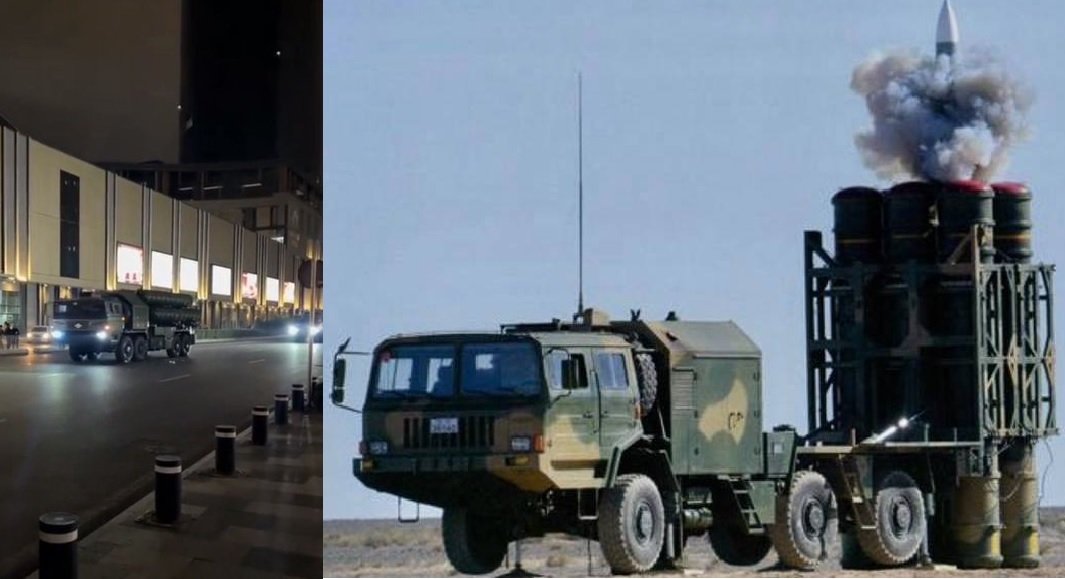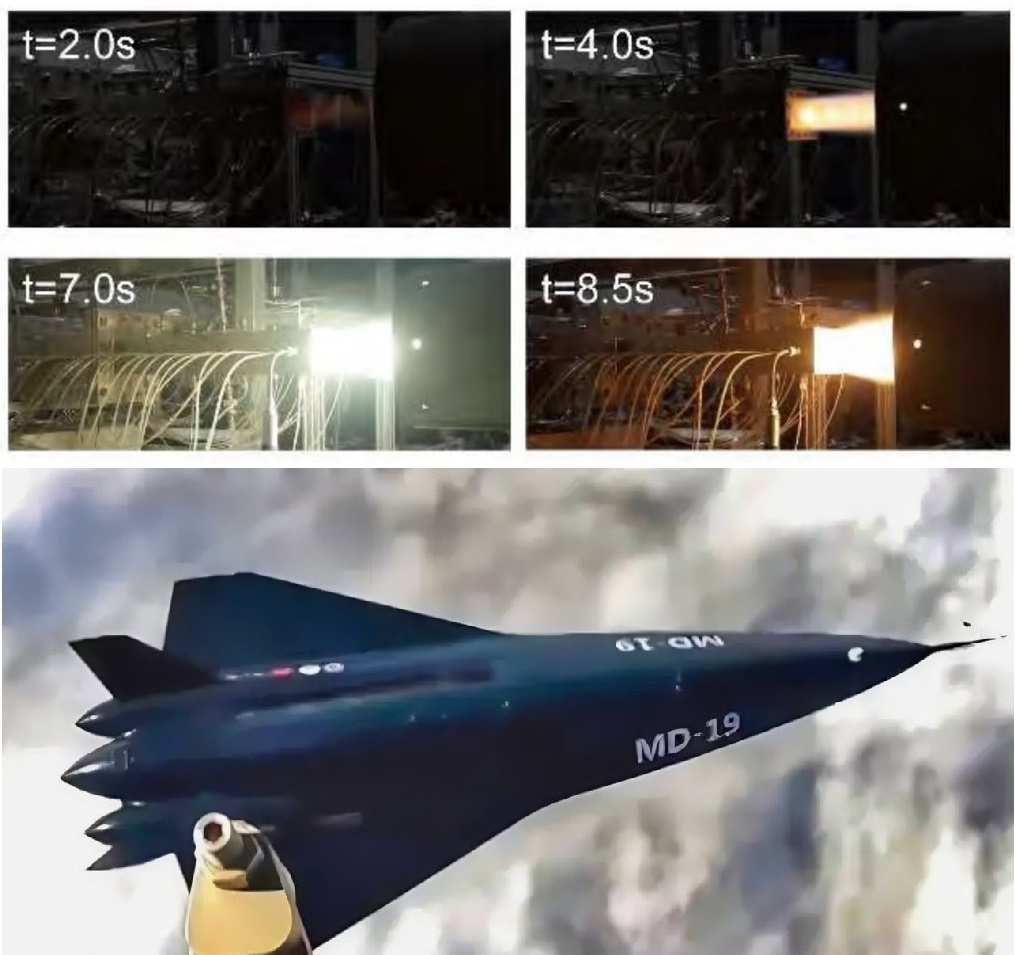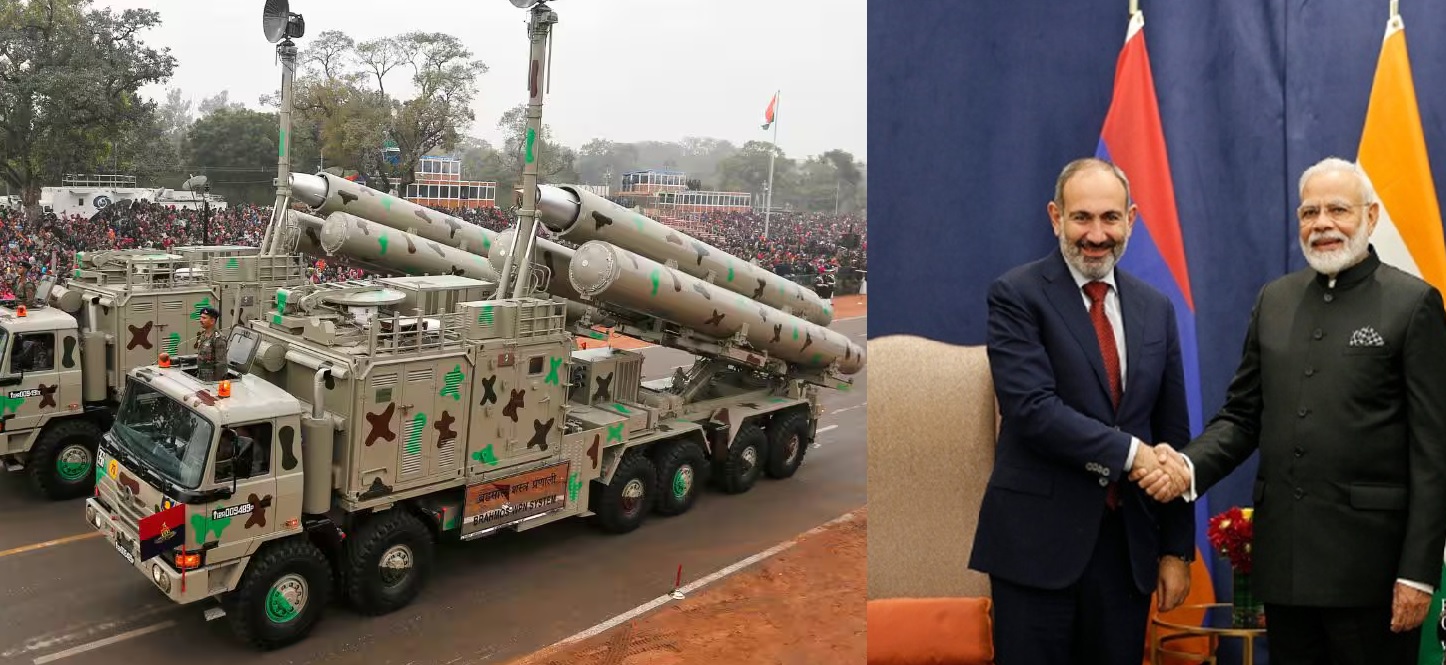Azerbaijan Unveils China’s HQ-9BE Missile System, But System’s Pakistan Failure Raises Red Flags

Azerbaijan has unveiled its newest addition to national defense — the Chinese HQ-9BE long-range surface-to-air missile system, also known by its export name FD-2000B. The system, capable of engaging targets at ranges of up to 300 kilometers, marks a significant leap in Baku’s air-defense network. But behind the impressive specifications lies a critical question: how effective is it in real combat — especially against modern, high-speed threats like India’s BrahMos missile?
Azerbaijan’s New Acquisition
The HQ-9BE was displayed publicly for the first time during preparations for Baku’s upcoming military parade, confirming that Azerbaijan has joined the small group of nations — including Pakistan, Morocco, and Egypt — that operate China’s flagship long-range SAM system.
Built by the China Aerospace Science and Industry Corporation (CASIC), the HQ-9BE is designed to intercept aircraft, cruise missiles, and short-range ballistic missiles. Its vertical cold-launch system mounted on an 8×8 transporter allows rapid deployment, while its phased-array radar provides all-weather, 360-degree coverage.
Each missile reportedly travels at Mach 4.2, striking targets at altitudes up to 50 kilometers. The system’s advanced radar and datalink allow simultaneous tracking of multiple threats, giving Azerbaijan the kind of long-range protection that was previously unavailable in the South Caucasus.
While Baku has not disclosed the number of units purchased, satellite imagery and parade footage show at least two launcher vehicles, suggesting one full battery has been delivered, with options for expansion in later phases. The deal is understood to have been signed as part of the Azerbaijan–China Strategic Partnership Agreement in 2024, which emphasized defense technology transfers and joint training programs.
The Shadow of Combat Performance
However, the HQ-9 family’s reputation has not been without controversy. The system is technically impressive on paper, yet its real-world performance remains largely untested in active combat. Unlike systems such as the U.S. Patriot or Russia’s S-400 series, the HQ-9BE has never been battle-tested in a full-scale conflict.
Its operational credibility suffered further after reports emerged that the HQ-9BE system deployed in Pakistan failed during operational use and was later destroyed during Indian strikes. Defense sources claim that Pakistan’s Chinese-supplied HQ-9BE batteries, meant to provide long-range protection, were unable to intercept incoming precision-guided munitions, and at least one launcher site was neutralized by Indian air or missile attacks.
These incidents have raised serious questions about the system’s survivability and effectiveness under real-world conditions. The HQ-9BE’s reported failure in Pakistan has led analysts to label it as a “not battle-tested” system — one that may look formidable in parades but lacks a proven record in combat.
While Chinese defense outlets downplay these claims, the events have highlighted the system’s vulnerability when confronted with coordinated, precision, and high-speed strikes backed by advanced electronic warfare.
Facing a BrahMos-Class Challenge
The real test for Azerbaijan’s new acquisition would come if neighboring Armenia were to acquire an offensive weapon such as India’s BrahMos supersonic cruise missile, which Yerevan has reportedly expressed interest in. The BrahMos travels at speeds nearing Mach 3, flying as low as 10–15 meters above ground or sea level during its terminal phase.
Such characteristics leave minimal reaction time for ground-based radars, especially if terrain or electronic countermeasures are in play. Defense experts agree that even advanced SAMs like the HQ-9BE would struggle to detect and intercept a BrahMos salvo without layered radar coverage, airborne early warning (AWACS) support, and real-time tracking networks.
The HQ-9BE’s radar can theoretically detect a large, high-flying aircraft at 300 km, but against a low-flying supersonic cruise missile, effective detection and engagement range could shrink to less than 40 km. That means only seconds to identify, lock, and fire — a window that often favors the attacker.
If Armenia were to field BrahMos, the missile’s speed, trajectory, and precision could potentially overwhelm isolated HQ-9BE batteries unless Azerbaijan integrates its system tightly with Israeli radars, Turkish surveillance drones, and local early-warning sensors — creating a true multi-layered defense net.
Strategic Symbolism vs. Practical Reality
For Azerbaijan, the purchase still represents a strategic milestone. The HQ-9BE extends its air-defense range far beyond older systems like the Tor-M2KM, Buk-MB, and S-125 Pechora, giving Baku an outer defensive ring capable of covering critical infrastructure and population centers. It also signals deepening defense ties with Beijing, further diversifying Azerbaijan’s procurement away from Russia and the West.
However, modern warfare has repeatedly shown that range alone does not equal protection. The HQ-9BE’s failure in Pakistan, its lack of combat experience, and its uncertain performance against supersonic threats have made experts question whether it can truly deliver what its specifications promise.
If Armenia moves ahead with the BrahMos purchase, the South Caucasus could become one of the world’s few regions where a Chinese air-defense system and an Indian strike missile face each other in potential opposition — a direct test of two competing military technologies.
Azerbaijan’s unveiling of the HQ-9BE marks both ambition and uncertainty. It strengthens the country’s layered defense structure, showcasing Baku’s intent to modernize and protect its skies through global partnerships. Yet, questions remain over the system’s real-world performance — especially after its reported failure and destruction in Pakistan — and whether it could withstand supersonic, low-altitude precision weapons like the BrahMos.
Whether the HQ-9BE proves a deterrent or a liability will depend not just on the missile’s range, but on how effectively Azerbaijan integrates it into its broader defense ecosystem — where speed, intelligence, and coordination matter as much as hardware.
For now, Azerbaijan has taken a major step forward. But in the unforgiving realities of modern warfare, only battle — not parades — will decide whether the HQ-9BE truly stands the test of combat.
✍️ This article is written by the team of The Defense News.






